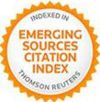Decision-making for historic building diagnosis by logical inference in HBIM approach: the case of onsite inspection of timber elements 
Abstract
The paper is going to outline a methodological framework for the visual strength grading of timber structural elements, based on the Historic Building Information Modelling (HBIM) approach for data collection and management. Particularly, the development of rule-based inference routines by Visual Programming Language (VPL) is proposed in order to support the automated elaboration of relevant information toward reliable assessment of residual performances. The presentation of an illustrative case study, a small theatre in South Italy, gives the opportunity to show some representative aspects – parametric modelling of building components, integration of external databases, application of the inference algorithm and elaboration of diagnostic reports – of the proposed methods and techniques, which are meant to pave the way for further applications in diagnosis of building pathologies by automated decision-making tools.
Keywords
Full Text:
PDFDOI: http://dx.doi.org/10.2423//i22394303v11n2p67
References
Apollonio, F., Gaiani, M., & Zheng, S. (2012). BIM based modeling and data enrichment of classical architectural buildings. SCIRES-IT - SCIentific RESearch and Information Technology, 2(2), 41–62. https://doi.org/10.2423/i22394303v2n2p41
Bloch, T., & Sacks, R. (2018). Comparing machine learning and rule-based inferencing for semantic enrichment of BIM models. Automation in Construction, 91, 256–272. https://doi.org/10.1016/j.autcon.2018.03.018
Bruno, S., De Fino, M., & Fatiguso, F. (2018). Historic Building Information Modelling: performance assessment for diagnosis-aided information modelling and management. Automation in Construction, 86, 256-276. https://doi.org/10.1016/j.autcon.2017.11.009
Bruno, S., Musicco, A., Galantucci, R., & Fatiguso, F. (2020). Rule-based inferencing diagnosis in HBIM. Volume Archeologia e Calcolatori, XXXI.2, 269–280. https://doi.org/10.19282/ac.31.2.2020.25
Cruz, H., Yeomans, D., Tsakanika, E., Macchioni, N., Touza, M., Mannucci, M., & Lourenço, P. B. (2015). Guidelines for On-Site Assessment of Historic Timber Structures. International Journal of Architectural Heritage, 9(3), 277–289. https://doi.org/10.1080/15583058.2013.774070
Dackermann, U., Crews, K., Kasal, B., Li, J., Riggio, M., Rinn, F., & Tannert, T. (2014). In situ assessment of structural timber using stress-wave measurements. Materials and Structures/Materiaux et Constructions, 47(5), 787–803. https://doi.org/10.1617/s11527-013-0095-4
Ente Italiano di Normazione - UNI (2004). UNI 1119:2004. Cultural Heritage - Wooden artefacts –Loadbearing structures - On-site inspections for the diagnosis of timber members.
Ente Italiano di Normazione - UNI (2017). UNI UNI 11337-4:2017. Edilizia e opere di ingegneria civile - Gestione digitale dei processi informativi delle costruzioni - Parte 4: Evoluzione e sviluppo informativo di modelli, elaborati e oggetti.
Ente Italiano di Normazione - UNI. (2004). UNI 11118:2004. Cultural heritage - Wooden artefacts - Criteria for the identification of the wood species.
Feio, A., & Machado, J. S. (2015). In-situ assessment of timber structural members: Combining information from visual strength grading and NDT/SDT methods - A review. Construction and Building Materials, 101, 1157–1165. https://doi.org/10.1016/j.conbuildmat.2015.05.123
Gargaro, S., Giudice, M. Del, & Ruffino, P. A. (2018). Towards a multi - functional HBIM model. SCIRES-IT SCIentific RESearch and Information Technology, 8(2), 49–58. https://doi.org/10.2423/i22394303v8n2p49
Hajirasouli, A., Banihashemi, S., Kumarasuriyar, A., Talebi, S., & Tabadkani, A. (2021). Virtual reality-based digitisation for endangered heritage sites: Theoretical framework and application. Journal of Cultural Heritage, 49, 140–151. https://doi.org/https://doi.org/10.1016/j.culher.2021.02.005
Messaoudi, T., Véron, P., Halin, G., & De Luca, L. (2018). An ontological model for the reality-based 3D annotation of heritage building conservation state. Journal of Cultural Heritage, 29, 100–112. https://doi.org/10.1016/j.culher.2017.05.017
Mol, A., Cabaleiro, M., Sousa, H. S., & Branco, J. M. (2020). HBIM for storing life-cycle data regarding decay and damage in existing timber structures. Automation in Construction, 117, 103262. https://doi.org/10.1016/j.autcon.2020.103262
Nishanbaev, I. (2020). A web repository for geo-located 3D digital cultural heritage models. Digital Applications in Archaeology and Cultural Heritage, 16, e00139. https://doi.org/10.1016/j.daach.2020.e00139
Palma, P., & Steiger, R. (2020). Structural health monitoring of timber structures – Review of available methods and case studies. Construction and Building Materials, 248, 118528. https://doi.org/10.1016/j.conbuildmat.2020.118528
Riggio, M., Anthony, R. W., Augelli, F., Kasal, B., Lechner, T., Muller, W., & Tannert, T. (2014). In situ assessment of structural timber using non-destructive techniques. Materials and Structures/Materiaux et Constructions, 47(5), 749–766. https://doi.org/10.1617/s11527-013-0093-6
Riggio, M., D’Ayala, D., Parisi, M. A., & Tardini, C. (2018). Assessment of heritage timber structures: Review of standards, guidelines and procedures. Journal of Cultural Heritage, 31, 220–235. https://doi.org/10.1016/j.culher.2017.11.007
Sánchez-Aparicio, L. J., Masciotta, M., García-alvarez, J., Ramos, L. F., Oliveira, D. V, Martín-jiménez, J. A., González-aguilera, D., & Monteiro, P. (2020). Web-GIS approach to preventive conservation of heritage buildings. Automation in Construction, 118, 103304. https://doi.org/10.1016/j.autcon.2020.103304
Simeone, D., Cursi, S., & Acierno, M. (2019). BIM semantic-enrichment for built heritage representation. Automation in Construction, 97, 122–137. https://doi.org/10.1016/j.autcon.2018.11.004
Sousa, H. S., Prieto-Castrillo, F., Matos, J. C., Branco, J. M., & Lourenço, P. B. (2018). Combination of expert decision and learned based Bayesian Networks for multi-scale mechanical analysis of timber elements. Expert Systems with Applications, 93, 156–168. https://doi.org/10.1016/j.eswa.2017.09.060
Sousa, H. S., Sørensen, J. D., Kirkegaard, P. H., Branco, J. M., & Lourenço, P. B. (2013). On the use of NDT data for reliability-based assessment of existing timber structures. Engineering Structures, 56, 298–311. https://doi.org/10.1016/j.engstruct.2013.05.014
Tannert, T., Anthony, R. W., Kasal, B., Kloiber, M., Piazza, M., Riggio, M., Rinn, F., Widmann, R., & Yamaguchi, N. (2014). In situ assessment of structural timber using semi-destructive techniques. Materials and Structures/Materiaux et Constructions, 47(5), 767–785. https://doi.org/10.1617/s11527-013-0094-5
Task Group “Assessment of Timber Structures” (2019). EN 17121:2019. Conservation of cultural heritage - Historic timber structures - Guidelines for the on-site assessment of load-bearing timber structures.
Yang, X., Grussenmeyer, P., Koehl, M., Macher, H., Murtiyoso, A., & Landes, T. (2020). Review of built heritage modelling: Integration of HBIM and other information techniques. Journal of Cultural Heritage, 46, 350–360. https://doi.org/10.1016/j.culher.2020.05.008
Article Metrics
Metrics powered by PLOS ALM
Refbacks
- There are currently no refbacks.
Copyright (c) 2021 SILVANA BRUNO, Mariella De Fino

This work is licensed under a Creative Commons Attribution-NonCommercial-NoDerivatives 4.0 International License.
SCIRES-IT, e-ISSN 2239-4303
Journal founded by Virginia Valzano





